The English Bill by Cold Steel has a head of 1055 high carbon steel that has been blackened. Its axe-like blade, pick and spear-tip are sharpened – they are moderately sharp. Its accompanying pole is crafted of stained and varnished ash wood. This polearm ships unassembled to lower shipping costs; the head is secured to the tapered shaft with a pair of wood screws which are included.
It is polearms such as the bill that started to tilt the favor of the late medieval battlefield to blocks of disciplined infantry over cavalry which had dominated in earlier centuries. Weapons such as bills and other polearms with stout spikes and hooks could topple cavalrymen from their mounts, leaving them vulnerable to waiting infantrymen.
While pikes grew in popularity over shorter polearms on the continent, the English preferred to use their Bills in combination with longbowmen in conflicts. The bill derives from an agricultural tool and its military version was simple in form, yet effective. It has a strong axe-like edge and a forward curved hook. A spear-like spike finishes the weapon. The hook was not only useful for defeating cavalry – a skilled billman could use it to pull away shields and to hook and drag down opponents, pinning them in place for a fellow billman to deliver a fateful chop or thrust. With techniques such as this a block of disciplined billmen could literally hack and chop their way through lesser foes.
Please Note: Our photos show an approximation of the completed weapon – we did not screw the head to the pole, this is why the screws are not present in the photos. Also poles may have slight bends or warps, however, we inspect them to try and pick the best ones available.



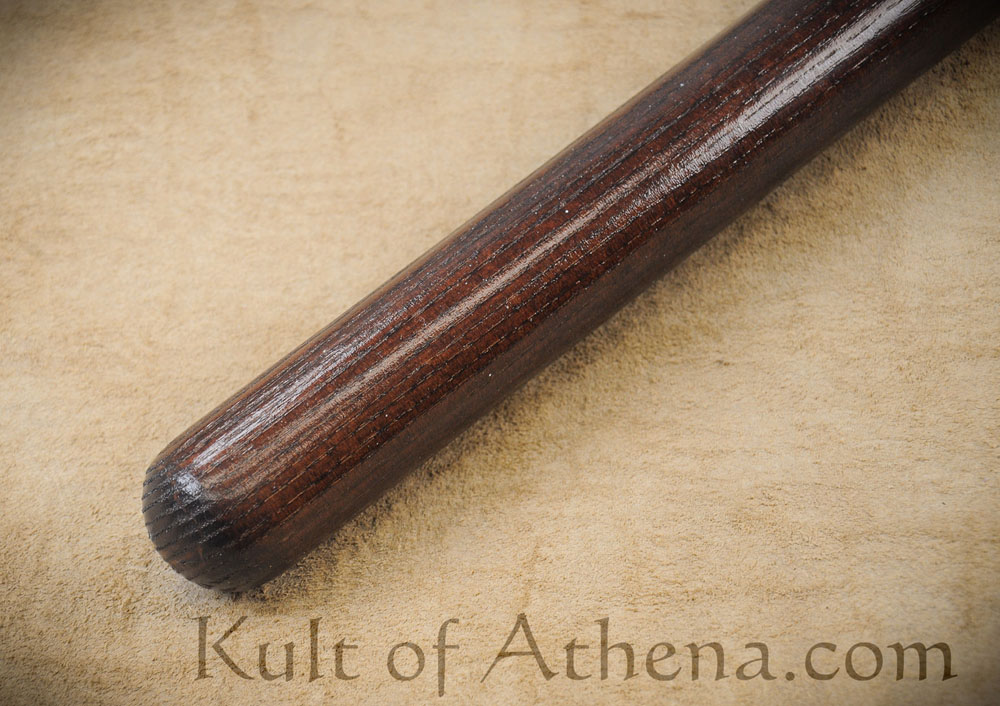
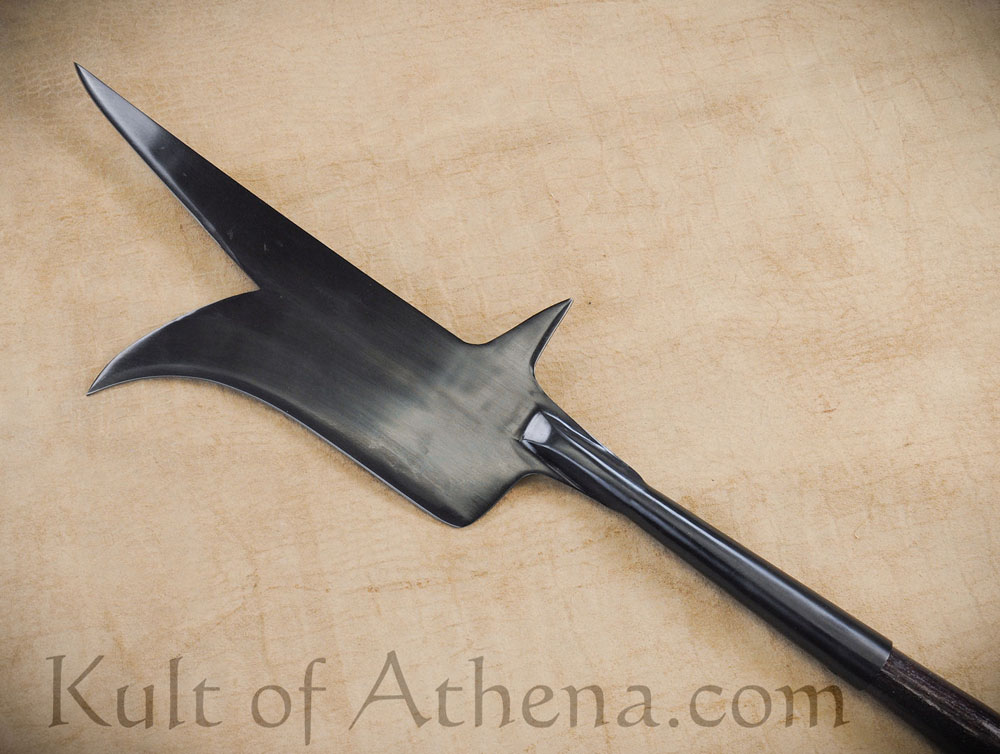
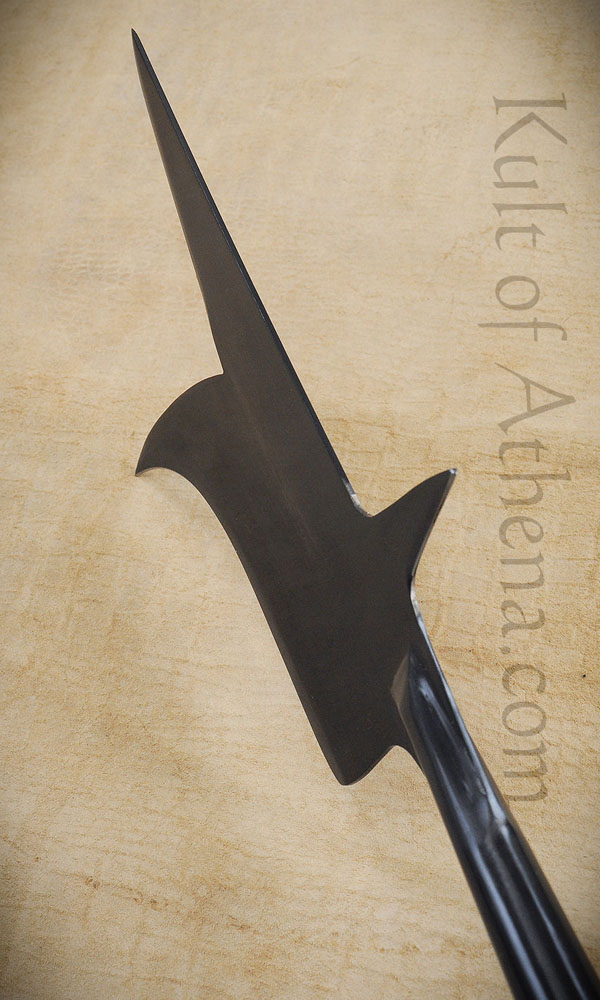
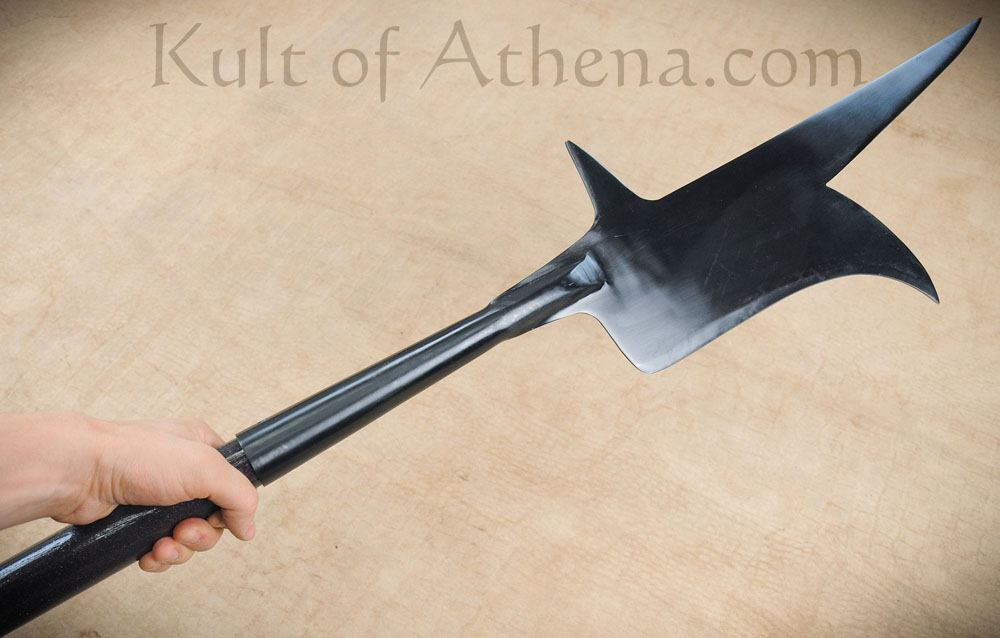
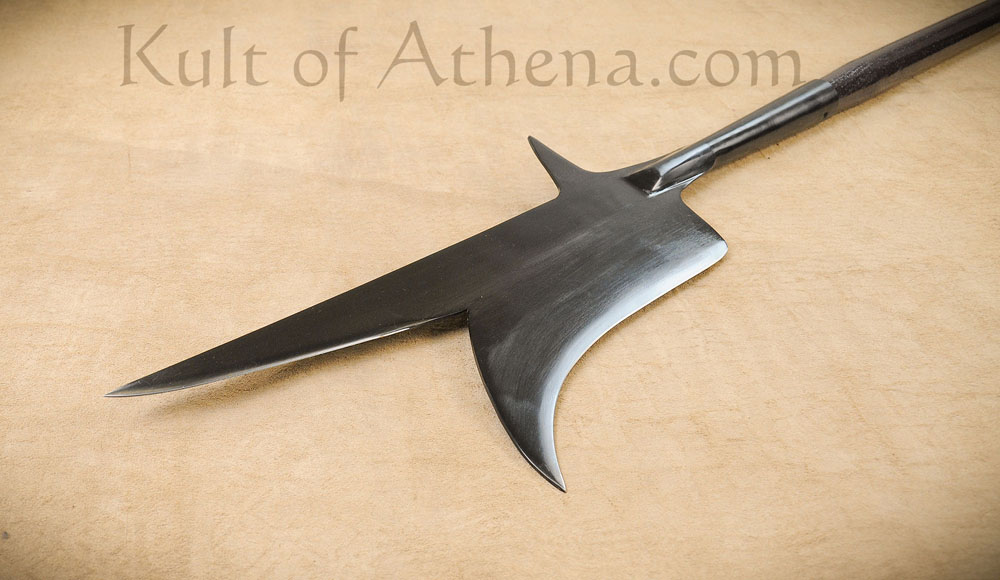
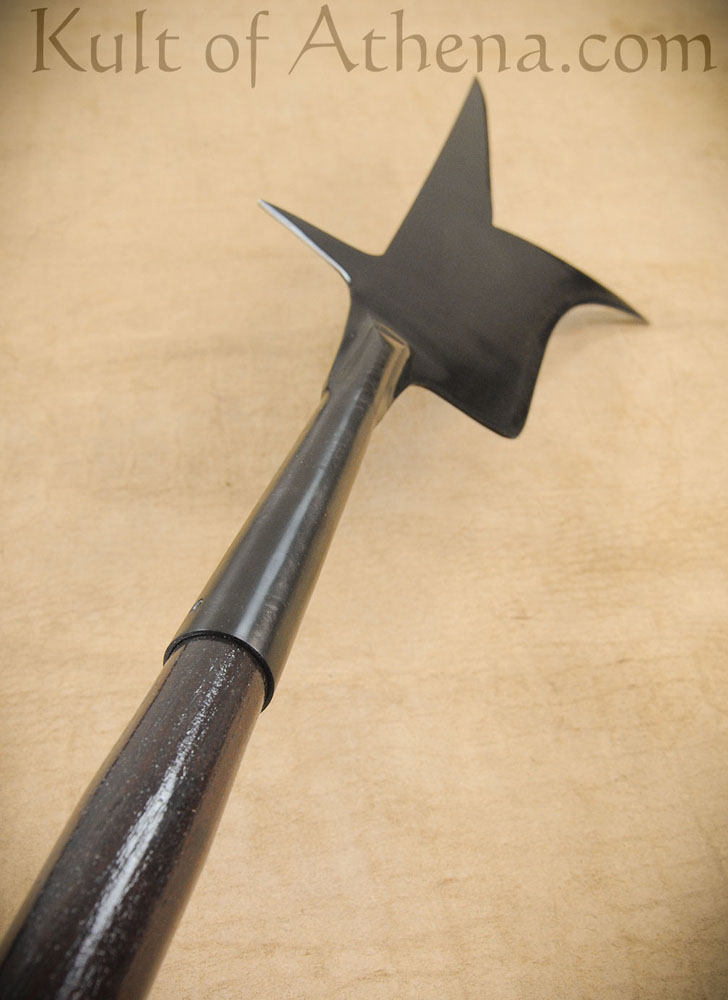
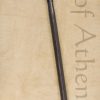
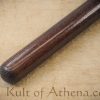
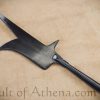
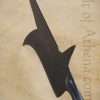
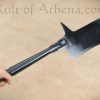
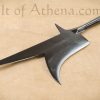
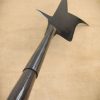
Logan D. –
Great Chopper. Clean cuts even with factory edge. This was my second polearm, which is always a weird rule with me, as second versions of items I try out are always substantially better than the first. Definitely the case here! Though I’m not a fan of the black finish, I really like this weapon. The hook shape is fascinating and effective! The pole is wider than I expected but really lets me grip it for devastating cuts. This is the only weapon in my collection that I haven’t had to sharpen to cut bottles. Maybe practice has made my technique better, but I was able to get really clean cuts where the bottom of the bottle didn’t even move. The pole is very long, and after doing research on the Bill, I found there are three different types. (At least with English Bills) And I went for the one with the shortest length overall to make it feel more like a poleaxe, so I just trimmed off about two feet with a circular saw and rounded the bottom with a file. With that few minutes of modification, this weapon is a blast and easy to use! The head fits on the pole very snugly even without screws, and even though the supplied screws are pretty small, it hasn’t loosened up a bit even after my friend botched a cut and took off a plank of our practice stool. Very easy to recommend, especially for the cheap price!
T.F –
Bill At this price why not? I believed I have owned this for about a year now. It is functional as is, but I did modify mine heavily. The shaft that comes with it is the same shaft they use for the boar spear. The shaft is perfectly round which isn’t ideal for a chopping type weapon. The head of the bill is coated in black, and order to properly secure it to the shaft you would have to peen it yourself. The head can fit snug on the shaft without additional security, but I wouldn’t use it without a peen.
Gerald Pierson (verified owner) –
Excellent starting point. Modified mine by removing the black paint from the head with orange stripper, cleaning with acetone, then using Brownell’s Oxpho-Blue rubbed back with a 3M red abrasive pad to create an antique, grey-metal look. I stripped the thick brown paint from the staff using a surface conditioning tool, then used a sander to “de-round” it by creating six rough longitudinal faces to make it appear handcrafted and for a better grip.
I shortened the staff by about eight inches to get it to a more historical length for a bill of this kind (which also made it easier to wield, go figure), then attached the head using wrought-head iron nails rather than screws. To show off the staff’s nice ash woodgrain, I’m using several versions of Tried & True polymerized linseed oil, the first a light coat of the version with walnut tint, then a couple coats of their varnish oil (contains resin), and now a coat of Tried & True with beeswax, rubbing with 0000 steel wool between each coat. I’ll give it a few more coats in the coming weeks. Mine looks really good.